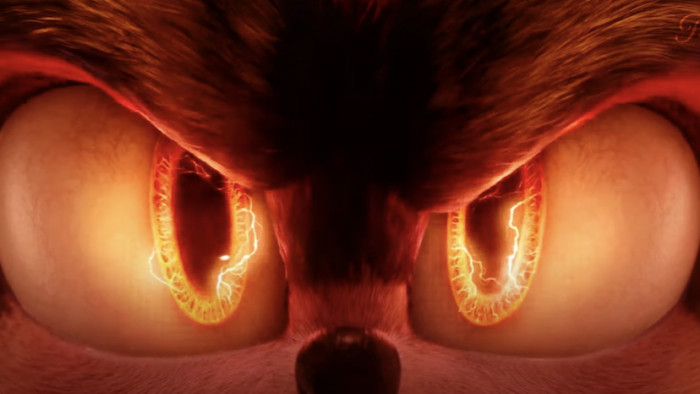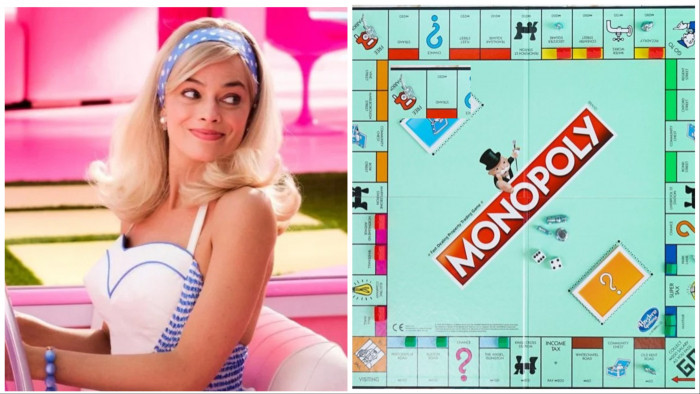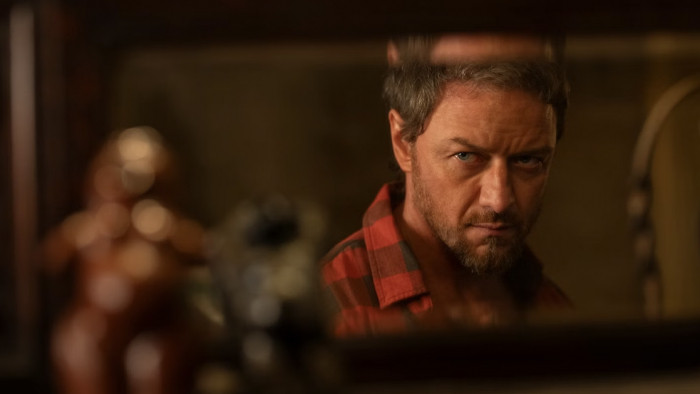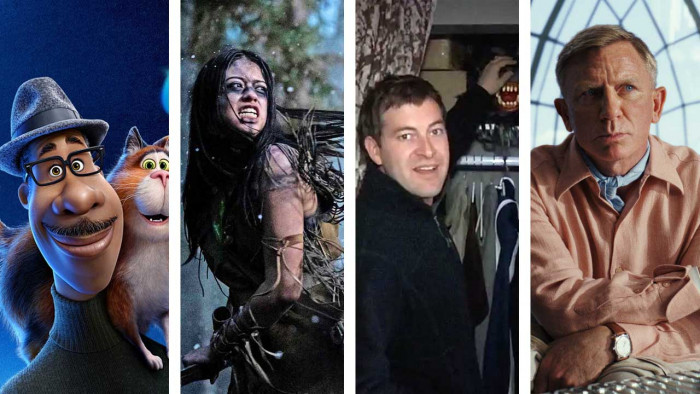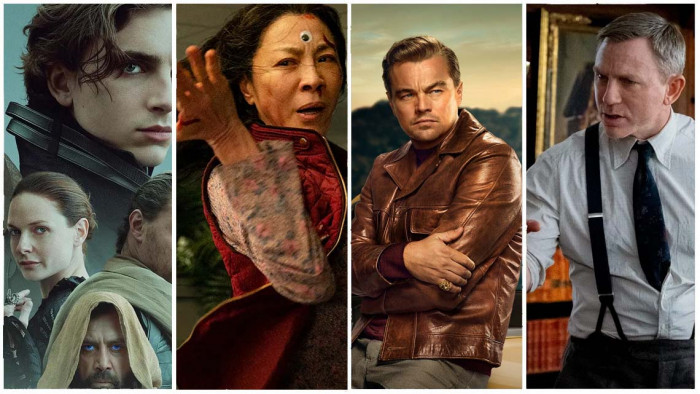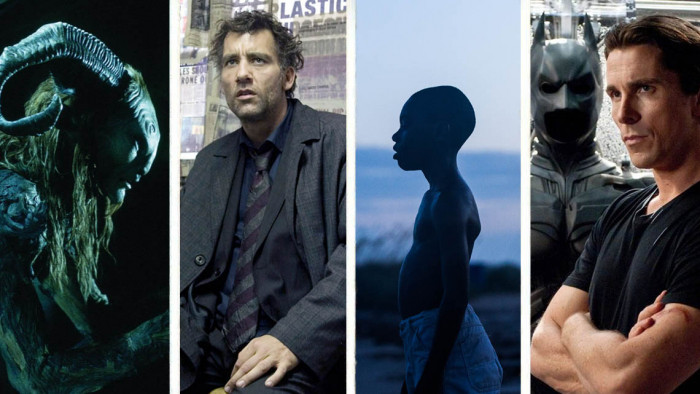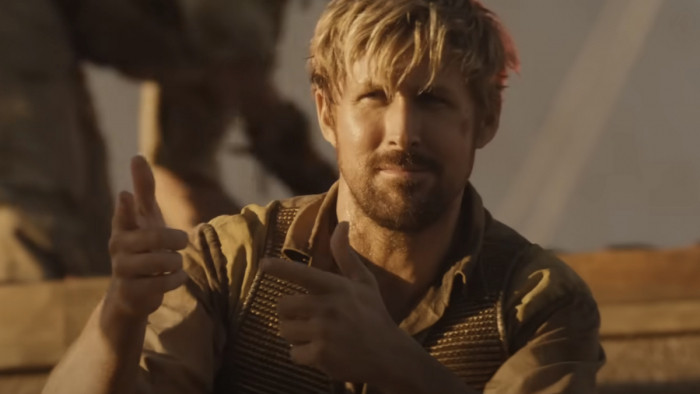How James Franco zig-zagged his way back down to Earth
America’s go-to weirdo has figured out the trick to getting people to notice him


James Franco is normal again!
…And all it took was seven degrees (including a PhD in literature), a gay alter ego, a borderline obsession with queer cinema, a teaching job at Yale, a book of fictional conversations with Lana Del Rey, several nude paintings of his close friend Seth Rogen, a poem about necrophilia and a short film about shitting in the woods. This is a man who, after being cast as a young James Dean, threw off the notion he should be defined by his Hollywood good looks – those hole-punch-perfect dimples, a smile that spans 40, maybe 50% of his face when he’s really happy, and eyes that crinkle up into mere creases when he laughs – and sought to do something different.
Maybe a good-looking guy bored by blockbusters should just go for it and make short films featuring dollhouses being sawn in half? Then, maybe he could paint fat pets, and let Terry Richardson shoot him in drag for transversal magazine Candy? Maybe, to prepare for his role as a male prostitute in the 2002 film Sonny he could… shadow an actual gigolo and watch him bang dudes. For research! It’s called method acting. You could write books about the weird things James Franco has done, and those books would be fat and laden with anecdotes and facts and unusual little details, engorged tomes so stuffed full of “he did what!” moments that any shelf doomed to bear their weight would creak and splinter from the force of such wackiness. Because when has James Franco ever been not-odd?
Should you ever meet James Franco, expect a handshake that lasts five seconds plus unbreakable eye contact. He’s stockier than you might imagine, still muscular. He pretends not to enjoy being asked to flex his preposterous Popeye biceps – but that sheepish grin is there, and he does a mean oh if you insist look as he becomes more animated. He puts on his own playlist – ‘Changes’, ‘Don’t Stop Believing’ – proper fist-in-the-air stuff. Then the Boomtown Rats come on and, while his photo is being taken, he discreetly mouths along to ‘I Don’t Like Mondays’. “Except today, right?” he says, looking over at me. I tell him it’s actually Tuesday. He gives a little nod and he goes back to flexing.
“If I look at the past seven or eight years of my career, I did a lot of different things like that,” he tells me later in a deafening boom of a voice. James Franco talks loudly – and he emphasises things so emphatically it can be draining just listening to him. “I was trying not to adhere to the tacit understanding of what a career should be. Not zigging when people expect you to zag. People used to say to me, ‘You’re not supposed to,’ but I’d think, ‘Well I’m interested in this, I’m not supposed to do this?!’ So I should do it! Why would that stop me?”
It’s less about zigging instead of zagging and more that Franco liked to zig and zag simultaneously. “Zigging and zagging!” he cries, like someone who has accidentally discovered a new planet. “Yes! Who else would do that?!”
In 2017, the 39-year-old actor might be still making weird movies (see: The Disaster Artist, not only a film about a film but a film about a fairly awful film to boot), but he’s also enjoying mainstream critical acclaim as the lead character on HBO’s The Deuce. “I only acted for two weeks this year,” he says, possibly proudly. “I’ve moved on, and I’m transitioning. Into a new phase.” Has Franco finally crash-landed back on Earth? Maybe. Is he… a little ordinary these days? Possibly. But is that what he secretly wanted all along?

Franco made The Disaster Artist with his brother, Dave – and it’s a quintessentially ‘Franco’ project. James plays Tommy Wiseau, the eccentric Eastern European director of 2003’s cult hit The Room. When the trailer for the film launched, one critic opined that it was “the most James Franco thing James Franco has ever done”. What does he think that means?
“Everyone just knows me for being ‘meta’,” he says. “This is a movie about making movies… I directed it, I acted in it and I play a guy who directed a movie. Other people have said I ‘stayed in character’ while I directed, but I think they meant I used [Wiseau’s] voice. In my head? I was me. I was James directing, I wasn’t pretending to be directing like someone else. God, can you imagine? That’s not good for you.”
He says he’s just watched Jim & Andy: The Great Beyond, the Netflix documentary looking at the way Carrey stayed in character, as Andy Kaufman, during filming for Man on the Moon. “He lost ownership over who he was, and it was interesting hearing Jim talk about being a public performer and who his ‘character’ was when he was performing. It’s hard to say whether it’s necessarily bad or necessarily great. It’s just a tricky area.”
Franco’s own tricky area, in which couldn’t walk in a straight line without tripping over high-concept art or a self-flagellating film project, is something he seems insistent on distancing himself from. “It wasn’t a waste of time – I learned a lot. My obsessive approach paid off. There is a kind of apprenticeship to anything, experience helps. I consider this new phase ‘adulthood’ – and I’m trying to do more adult work.”
It all got a bit pretentious, I say, which causes him to screw his face up a little bit. Was it a misconception? “No, no, I was pretentious,” he says. “I got a lot of criticism for ‘out there’ projects, but that’s the price you pay for doing them, and for me doing what I wanted. It wasn’t like I wasn’t aware that I wasn’t going to come under scrutiny. It was a phase I had to go through. I wanted to explore those things at the time. Now… maybe not so much. I am trying to be more authentic – not that I was inauthentic – but my public life became a performance. I don’t think I have to feed that performance anymore.”
What about his ‘queer’ phase? Franco seemed to relish teasing his sexuality to the press – and the press seemed to love trying (and failing) to figure him out. He chose projects that let him explore facets of the gay community – activism in Milk, censorship in Interior. Leather Bar, literally ‘exploring’ oral sex for The Broken Tower, a project at film school, by deepthroating a dildo and gleefully boasting about his lack of gag reflex. His aim, he says, was to celebrate queer culture because he became tired of “conventional, heteronormative stories”.
“For a long time, I had been interested in unconventional narratives,” he says. “Stories that, until recently, haven’t been told by the mainstream.” In 2017, Hollywood can’t get enough of gay men – Moonlight, Call Me by Your Name and, the latest indie darling, Beach Rats. But they’re still gay stories told by straight men. I wonder if he sees the problem in that.
“When I did Interior. Leather Bar I teamed up with a great [LGBT] director, Travis Mathews, to make it. But the positive thing is… it premiered at Sundance. I helped get it in front of people who wouldn’t have seen it otherwise, and exposure like that is important.” So he’s helped, but he seems to think he’s done enough. For now. “I’m focusing on other things,” he says, but a return to queer cinema isn’t off the cards. “I wouldn’t say never, if a movie called for it.”

Maybe the problem is that being larger than life – especially if you’re straight, white and male – feels dull. Does anyone want another complex male genius? Maybe the cleverest thing to do is tone it down, and if that’s true, Franco is still reading the room, to an extent, gauging the mood and acting accordingly.
“If you want to win loads of awards, there’s a type of life you can live that will allow you to do that,” he says. “I can define my own criteria of success. Maybe you want to sustain a career? I was always trying to do something. Maybe it’s going to take people a while to understand that I’ve slowed down.”
I think Franco is more introverted than he lets on. “I am,” he says, “When I was younger, I think the reason I took on all this work, doing all those college degrees, teaching, a PhD, arthouse films, I think it made me feel safe.”
Has that changed? “No,” he muses. “No, not really.”
He rubs his eyes again – for a lot of our time together, he has flickered between talking with his eyes closed and talking without breaking eye contact. “It’s very easy to get caught up in overworking, and I learned that without balance it was driving me insane. It was making me unhappy. I was running and running and I was so introverted, because I had this fear of people, and the world at large. I kept thinking I’d solved the problem of feeling introverted but every time I stopped, I realised I was just distracting myself by being busy.”
But, he adds, he’s learned how to talk with people – not to them, not projecting James Franco The Actor on to them – but by listening, too, and thinking, and tuning a few things out. He learned all of this once he pulled back, and started saying no, and started being a bit less, you know, everywhere.
“Suddenly, all the feelings and issues and stuff I had been hiding from for 20 years, all came flooding back. I don’t want to talk about them too much.” He looks down at my Dictaphone, then pulls a sort of no offence? expression. But he grew up, built up his defences and did the best he could. Only suddenly, the crutches he’d leaned on in order to stay sane stopped working.
“Jim Carrey said he achieved everything he dreamed of, all the things he wanted. And it didn’t fill the hole. When he said that, my jaw dropped. That’s what happened to me. I had done everything I dreamed about, and yet…” He trails off.

So back to The Disaster Artist, the film-about-the-film. It’s true that it might be the most ‘James Franco’ thing the guy’s ever done, but it feels like nobody else would have had the audacity to make it. “The Room got a reaction from people – and it still does, 14 years later,” he says. “Conventionally, it is not good. But it’s popular, and that says to me that people get something from it. Tommy was so earnest – he put his personal life into the movie, and his feelings about being betrayed by the world. I think he was trying to project an image of himself that he wanted the world to accept.”
He believes the film was a personal statement about one man’s feelings, albeit a man who lacked a degree of clarity about himself. “Everybody fears failure. The fear of failing – not just at work, but across my entire existence – sustained me when I was younger.”
Since it’s inarguable that some of his creative endeavours have failed, and as our time comes to a close, I wonder if Franco has got over his fear of failing yet.
“I couldn’t have done any of this eight years or so ago,” he says, which is to say he doesn’t really answer.
“I just feel lucky to be here.”
The Disaster Artist is at cinemas now
Latest
Related Reviews and Shortlists


